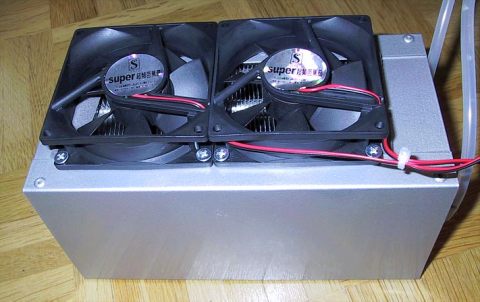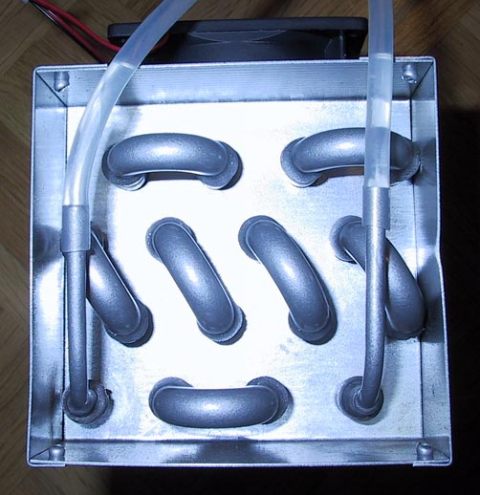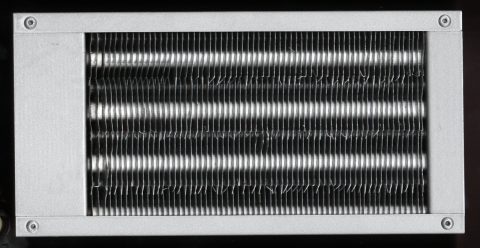Senfu Watercooler Unit
by Tillmann Steinbrecher on March 22, 2000 7:40 PM EST- Posted in
- Cases/Cooling/PSUs
The Radiator
Watercooling the CPU is nice, but once the water has "absorbed" the heat from the CPU, how do we cool it down? In the early days of watercooling, most users of self-made watercoolers simply used reservoirs with a few liters of water in order to cool the water down. However, with today's CPUs that dissipate over 50W, a simple reservoir won't suffice - after some time, the water will become too warm, and the watercooler will lose its efficiency. So, a better way to cool the water is needed: a radiator.

The
Senfu dual fan radiator

Side
view of the radiator. The thick tubes are made of copper.

The radiator's fins
The radiator consists of copper tubes with aluminum fins between them. Those familiar with car mechanics will notice that this radiator looks a bit like the heat exchangers that are used to heat our cars. The tubes inside the radiator have a wider diameter than the inlet/outlet, so that the water will stay longer inside the radiator.
The radiator is equipped with two very efficient (but also quite loud) 80mm fans. The fans have pass-through power supply connectors and do not support rpm monitoring. The fans do not have finger guards. Since the radiator should be placed outside the computer case, those who have small children around should add additional finger guards to the fans.
The radiator does a fine job of keeping water temperatures low; it is by far sufficient for dissipating the heat generated by today's most power-hungry CPUs, and the dual fan unit can also handle the additional power dissipation of a Peltier element.
Since the radiator is also available separately, it is also a great choice for those who already have self-made watercoolers, but have trouble keeping the water temperature low.
Keep in mind that this radiator does not replace a water reservoir, since the Senfu watercooler is not a closed circuit cooling solution. The user will have to supply some kind of water reservoir.










0 Comments
View All Comments